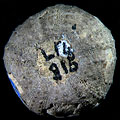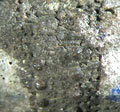The Echinoid Directory
Leiopleurus Lambert, 1902, p. 37
| Diagnostic Features |
|
|---|---|
| Distribution | Eocene, Spain. |
| Name gender | masculine |
| Type | Psammechinus orbignyi Cotteau, 1883, p. ** by original designation. |
| Species Included | Only the type species |
| Classification and/or Status |
|
| Remarks | Lambert & Thiery (1911, p. 274) wrongly thought this name was preoccupied by Leiopleura Deyrolle, 1884. In fact the name is available according to ICZN rules. They synonymized the genus with Hebertia, here treated as a junior synonym of Echinopsis. Lambert, J. 1902. Description des echinides fossiles de la province de Barcelone. Memoires de la Societe geologique de France 24, p. 37. |




